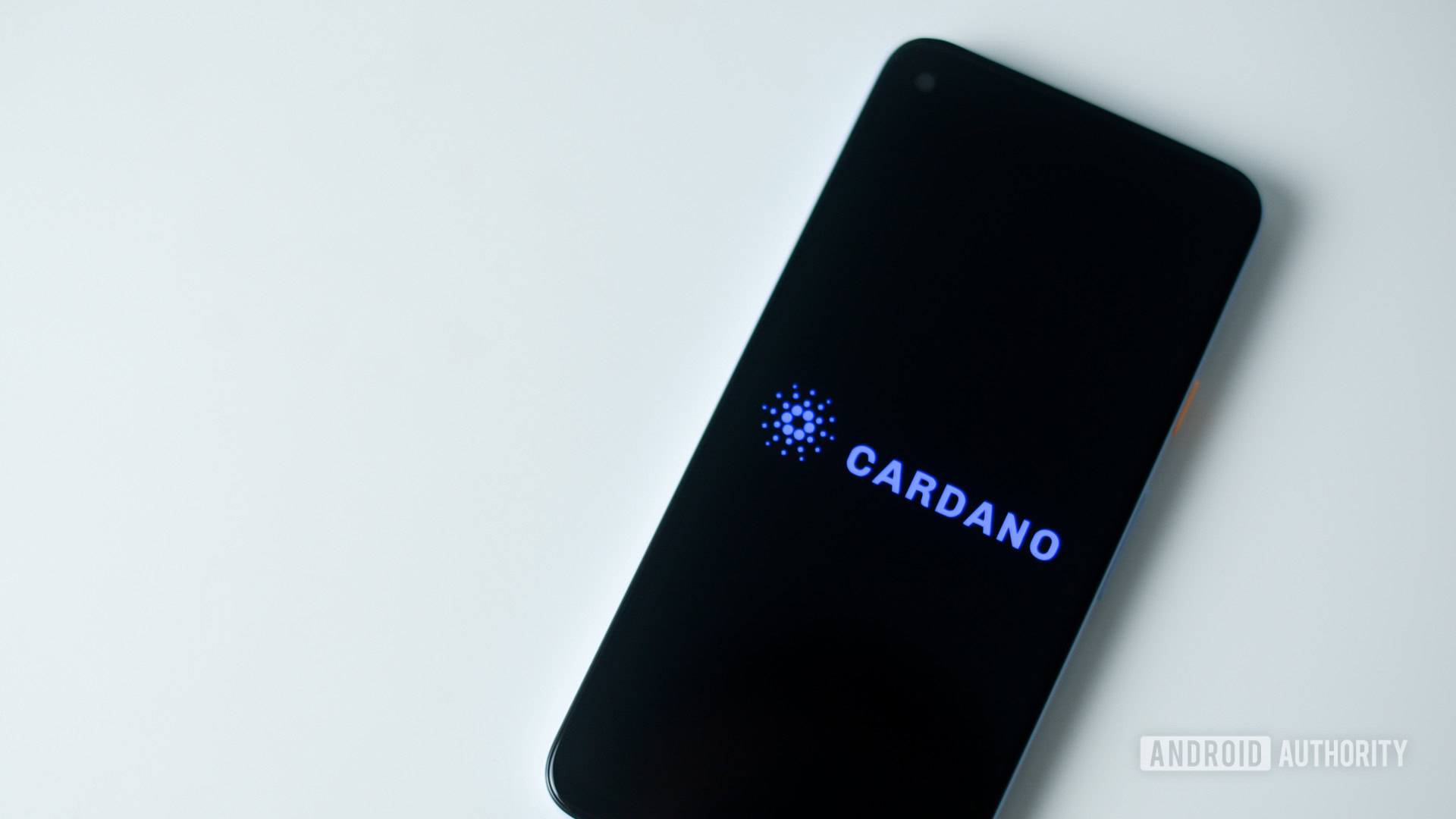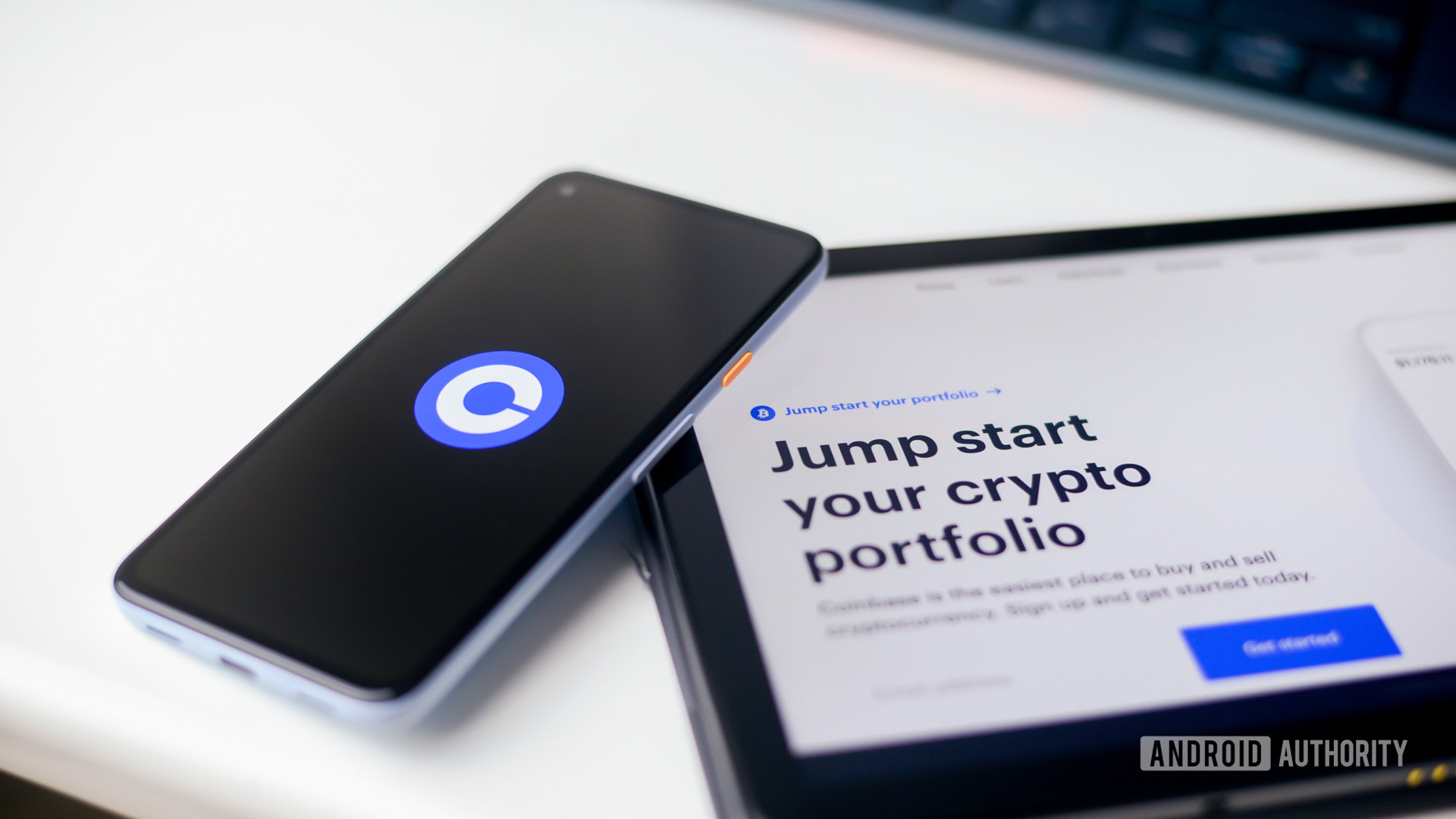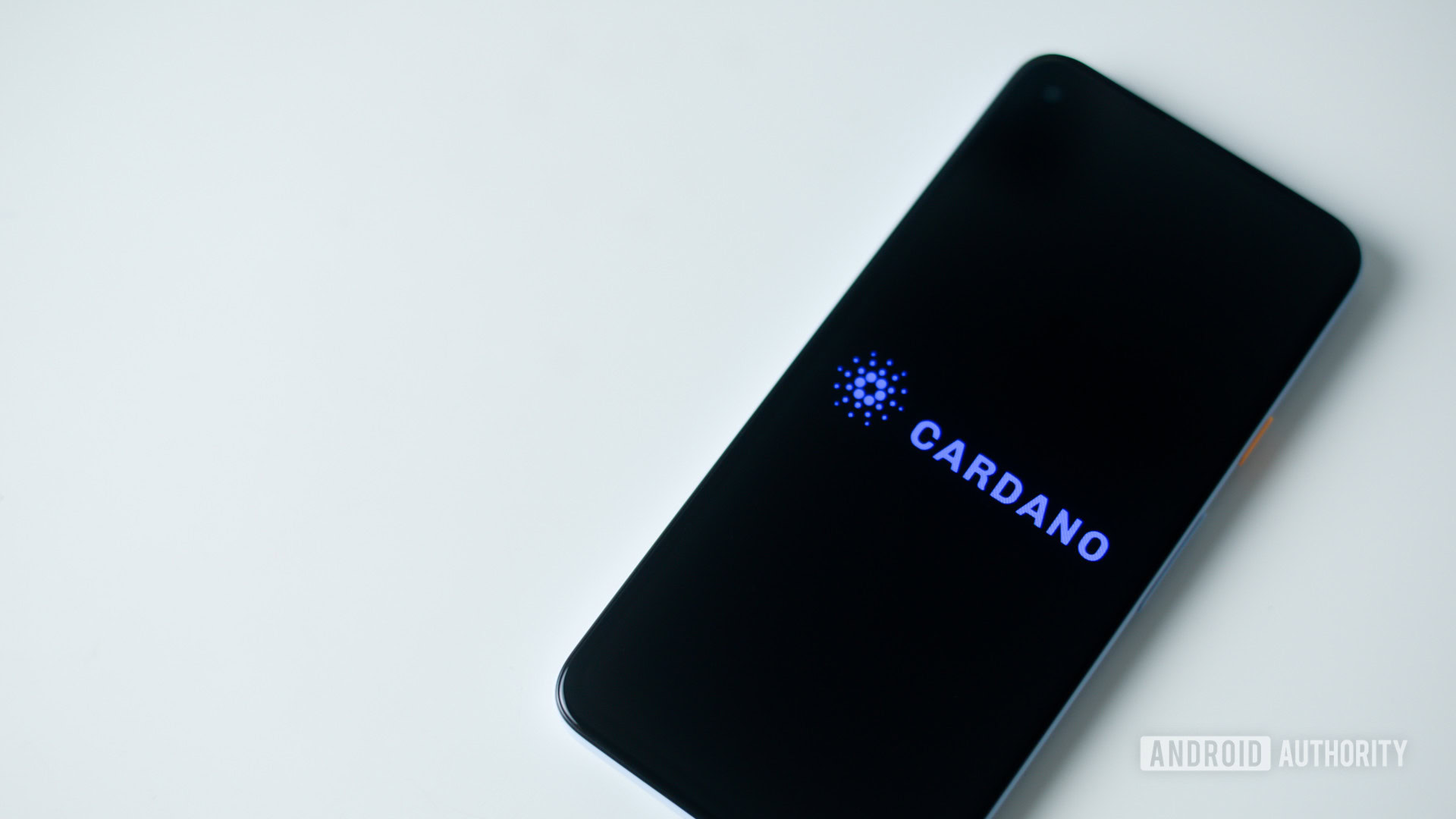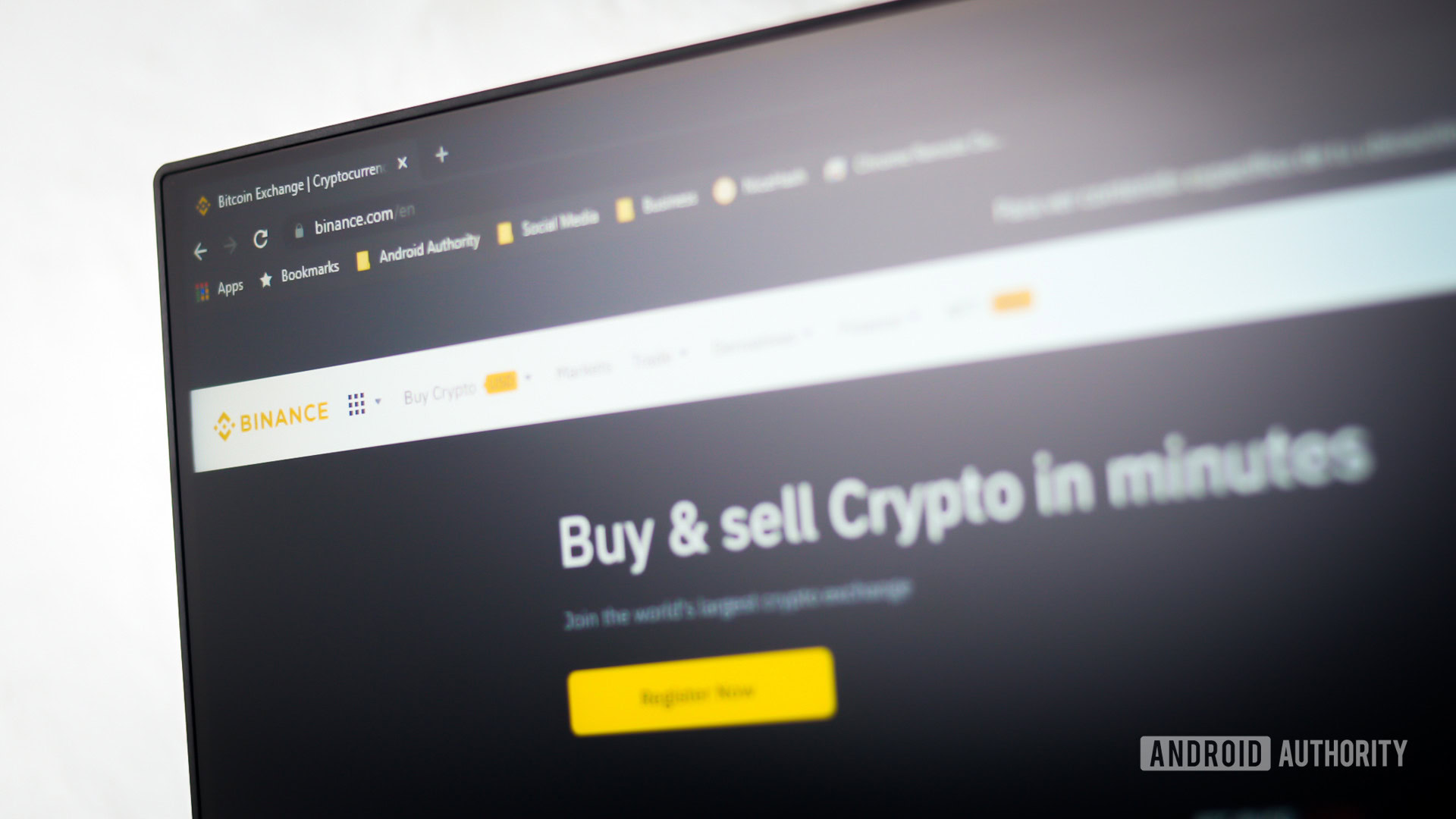Affiliate links on Android Authority may earn us a commission. Learn more.
What is Cardano? Demystifying the long-awaited Ethereum-killer
Published onJuly 27, 2021

In a world full of competing cryptocurrencies, it’s rare to find a project that prioritizes a slow and methodological approach to feature development. And yet, Cardano has found significant success by going down this exact path.
Founded in 2015, Cardano aims to deliver a decentralized blockchain platform based entirely on peer-reviewed research. It also often proclaims itself as a “third-generation” cryptocurrency network, building upon the fundamentals previously laid down by Bitcoin and Ethereum.
See also: The best cryptocurrency apps for Android
So what makes the Cardano platform unique, and why is it among the world’s most valuable cryptocurrencies? Let’s find out.
Understanding the basics
Given that Cardano is an extension of earlier cryptocurrencies, you may come across a myriad of technical phrases unique to this ecosystem. Here are a few such terms to get you started:
Blockchain: In the context of Bitcoin, a blockchain is simply a ledger of transactions spread across hundreds or thousands of computers. Over time, however, blockchains have become incredibly versatile. Specifically, a modern blockchain can store any kind of data. This allows third-party developers to create entire applications with data permanently stored on a distributed blockchain network.
Smart contracts: Originally pioneered by Ethereum in 2014, smart contracts leverage the properties of blockchain to create programmable, self-executing digital contracts. Execution of the contract is handled by the blockchain network when a certain condition is met. Since the conditions are pre-determined by both parties, a smart contract reduces the chances of disputes – all without central authorities like a court.
Decentralized applications: A decentralized application (dapp) is essentially just a computer program that uses smart contracts to achieve its functionality. The most popular dapp, Uniswap, is essentially a website that allows you to swap one cryptocurrency for another. In this case, every swap is recorded to the public Ethereum blockchain – thereby eliminating the risk of fraud and offering an unprecedented level of transparency.
What is Cardano?
Cardano positions itself as an Ethereum-rival, in part because it intends to offer the same functionality – with a few notable improvements. By the end of 2021, the platform aims to add support for smart contracts and decentralized applications.
Cardano’s primary differentiating feature then is the way it handles new transactions. More specifically, Cardano uses the Proof of Stake consensus mechanism for transaction verification, which is several orders of magnitude faster than Bitcoin and Ethereum’s Proof of Work. We’ll circle back to how this change affects you and others using the network in a later section.
In a nutshell, though, Cardano prides itself on its efficiency and ability to outperform most other blockchain platforms. To that end, it is often described as a third-generation blockchain platform – alongside other projects such as Polkadot. However, it is important to note that these are mostly self conferred titles and hold no official relevance.
The Cardano blockchain platform was first conceptualized in 2015 by Charles Hoskinson – one of the original co-founders of Ethereum.
Notably, Hoskinson quit working on Ethereum after an internal dispute over the direction of the project. Vitalik Buterin, the other co-founder, argued that Ethereum should be structured as a non-profit organization, while Hoskinson lobbied for a commercial-focused approach. Ultimately, Buterin prevailed, and the non-profit Ethereum Foundation was born.
Knowing this, it isn’t surprising that Cardano shares Ethereum’s goals to a significant degree. Cardano also has a native cryptocurrency, called ADA, that can be used as an investment, transfer of value, and payments for functions on the blockchain, such as transaction fees. As of mid-2021, Cardano’s ADA is comfortably one of the largest digital currencies on the market.
What makes Cardano special?

Cardano’s primary selling point is that its development follows evidence and science-based methods. This means that every single proposal or change to the platform is based on peer-reviewed research papers. This is somewhat unique in the cryptocurrency industry since most projects incorporate changes based on community feedback.
So far, over 110 research papers have been published by IOHK, the company that oversees Cardano’s development.
Keeping this rigorous standard in mind, Cardano’s developers came up with an overarching roadmap for the platform all the way back in 2015. Divided into five phases or eras, the roadmap takes Cardano from a simple token-only platform to one that supports complex decentralized apps and self-sustaining governance.
Cardano’s five phases include:
Byron: Phase 1 or Byron was released in September 2017 and represented the first version of Cardano released to the general public. It introduced the ADA cryptocurrency and the official Daedalus desktop wallet. Only three entities were in charge of transaction verification at this stage, which meant that Cardano was essentially centralized.
Shelley: This second stage focused on making Cardano decentralized by finally allowing anyone to participate in the transaction verification process. It also made ADA a highly performant cryptocurrency – managing to process thousands of transactions per second. All of this was accomplished by Cardano’s Proof of Stake consensus mechanism, dubbed Ouroboros. Shelley officially launched in June 2020.
Goguen: Cardano’s third era aims to introduce smart contracts and decentralized applications. Even though Cardano’s true utility lies in the existence of these features, they were conspicuously absent at the time of the platform’s release. A few delays later, Goguen is finally expected to introduce them in late 2021.
Basho: Dubbed the era of ‘scaling,’ Basho aims to scale Cardano even further by introducing sidechains. This essentially means that the primary blockchain will be split up into several smaller chains, called shards. Sharding is also a key feature of Ethereum’s Serenity network upgrade – and is expected to boost transaction capacity even further.
Voltaire: Cardano’s final goal is to become a self-sustaining system without the oversight of IOHK, Cardano’s parent company. Voltaire will introduce a full-blown governance system with provisions for user voting on new features and proposals. Cardano will only become a truly decentralized platform once this phase is complete.
If some of these names look familiar to you, that’s because they are all names of esteemed poets. Even the ADA token is named after Ada Lovelace, the mathematician who became the first computer programmer. Ada was also the daughter of the romantic English poet Lord Byron.
While Cardano’s eras do not have fixed deadlines, the roadmap has been the subject of some ridicule due to the slow process. In particular, support for smart contracts was expected to be released several years before its actual launch in 2021.
This time next year I predict there will be hundreds of assets running on Cardano, thousands of DApps, tons of interesting projects and lots of unique use and utility. 2021 is going to be so much fun watching Cardano grow and evolve. The community is definitely ready to innovate— Charles Hoskinson (@IOHK_Charles) July 26, 2020
Cardano’s ace card: What is Proof of Stake?

As with any cryptocurrency or blockchain platform, Cardano needs a mechanism to verify the authenticity of new transactions on the network.
Bitcoin, the world’s first decentralized currency, pioneered the Proof of Work (PoW) consensus algorithm to do just that. In a PoW-based blockchain, “miners” spend computational power to find a unique mathematical solution for a batch of transactions. The first computer to find the correct solution is rewarded for their effort, and the transactions within that batch are recorded permanently.
The PoW consensus algorithm has proven to be rock solid over the past decade. However, it is not without its problems. Most notably, the algorithm’s competitive reward structure has led to millions of computers joining the network.
On its own, this wouldn’t be an issue. However, factor in the carbon footprint of these miners and Proof of Work’s problems are suddenly much more tangible. It is also nearly impossible to scale the PoW mechanism beyond a handful of transactions per second without sacrificing either decentralization or security.
For a multi-functional blockchain such as Cardano, an alternative consensus mechanism needed to be introduced. To that end, the Proof of Stake algorithm was chosen for its low overall energy consumption and high scalability potential. The Ethereum community has also agreed on this front and is currently in the process of migrating its blockchain from Proof of Work to Proof of Stake.
While Ethereum is still working out the kinks, Cardano already has a Proof of Stake-based blockchain platform live in production. Notably, this was only possible because Cardano’s original design included PoS as an early goal. But how does Cardano achieve scalability with Proof of Stake, and how does it differ from Bitcoin’s approach to transaction validation?
Cardano’s consensus mechanism – colloquially called Ouroboros – allows ADA token holders to directly vote in the transaction validation process – no mining or energy-intensive computations necessary. As long as they’re honest, these validators receive a reward for their contributions.
A financial operating system for the world run on low cost hardware powered by the Sun https://t.co/JG4iqmAyLq— Charles Hoskinson (@IOHK_Charles) July 10, 2021
Validators are chosen based on two criteria – the number of tokens held and the duration of their holdings. It’s worth noting that users must first lock or ‘stake’ their tokens to become validators. This requirement ensures that fraudulent transactions or network attacks are financially unviable.
Once chosen, a validator has a short time window to vote on the transaction. Other validators will also chime in with their independent vote. In the end, these votes will be corroborated by the network. A higher stake translates to a more trustworthy vote, so a new malicious validator cannot corrupt or hijack the system.
Assuming every vote is favorable, the transaction is permanently recorded to the blockchain, and every validator receives a reward in the form of ADA tokens.
Is Cardano superior to Ethereum?

As you may have already heard, Ethereum is currently in the midst of a multi-year migration to Proof of Stake – the same consensus network that powers Cardano. Does that mean Cardano is superior to Ethereum?
Well, not quite. Cardano may already have a working Proof of Stake implementation, but it still lacks the ability to host and execute smart contracts on its blockchain. Even though Cardano can process transactions much faster than Ethereum, there’s no real use case for the platform at the moment.
That being said, Cardano’s parent company does intend on introducing the third era – dubbed Goguen – very soon. Once that happens, developers will be able to publish smart contracts and leverage Cardano’s Proof of Stake-associated benefits.
In that vein, however, it is also worth noting that Ethereum’s network upgrade is already underway. The existing Proof of Work blockchain is expected to become obsolete by late 2022. From this perspective, it’s clear that both platforms are racing to incorporate each other’s strengths.
What happens after Cardano reaches feature-parity with Ethereum remains to be seen. While some smart contracts and decentralized applications will definitely migrate to it, others may choose to stay on Ethereum. With a higher market cap and larger user base, Ethereum enjoys a clear early mover advantage. It has also been in the news cycle for far longer than Cardano.
Many speculate that smart contracts will not migrate away from Ethereum wholesale. Instead, they will end up adding support for Cardano in addition to other platforms. This has already happened in Binance Smart Chain (BSC) – another smart contract-capable blockchain platform.
Take Tether (USDT), for example, which lives on as many as eight different blockchain platforms. It recently added support for BSC due to rising transaction costs and wait times on the Ethereum blockchain. Once Cardano’s Goguen update lands, there’s no reason why Tether Limited can’t add its token to yet another blockchain. Given that most cryptocurrencies are fungible, you could even trade your Etherem-based USDT tokens.
All in all, Cardano will likely capture some market share, but it remains to be seen if it can steal Ethereum’s show for good.
Cardano alternatives worth considering

Cardano still has a few ways to go before it comes close to challenging established smart contract platforms. To that end, here are a few alternatives you can consider instead:
Ethereum: It’s no surprise that Ethereum is at the top of this list, given that it is the most valuable smart contract platform on the market today. Ethereum is already home to dozens of decentralized applications, with use-cases ranging from token swaps to crypto crowdfunding.
Algorand: Algorand is yet another Proof of Stake-based cryptocurrency that excels at scalability. The project was founded by Silvio Micali, faculty at MIT and recipient of the Turing Award in computer science. Algorand’s platform allows developers to create various applications – including smart contracts and stablecoins, to name a few.
Binance Smart Chain: The Binance Smart Chain has been the target of some criticism over the past few years due to its affiliation with the cryptocurrency exchange of the same name. Nevertheless, it represents another platform that supports smart contract functionality today. If decentralization is not as important to you, Binance’s smart chain has deep integration with the cryptocurrency exchange for low-fee transactions.
See also: The best crypto wallets for Android
Should you buy Cardano (ADA)?

With smart contracts due any month now, Cardano is certainly one of the most hyped projects in the cryptocurrency industry. As mentioned above, though, there’s precedent for believing that it will take much longer for smart contract developers and users to adopt the new Cardano paradigm.
Furthermore, as with any major upgrade, there’s always the risk of delays and vulnerabilities. While unlikely, they are worth considering if you’re looking to add Cardano to your investment portfolio.
As one of the top ten cryptocurrencies by market cap, you can find ADA on most major exchanges – including Coinbase, Kraken, and Binance. If you’re looking for a wallet to hold your ADA tokens long-term, Yoroi is recommended directly by the makers of Cardano.
Just don’t forget to make multiple backups of your wallet’s 15-word recovery phrase. Losing it will make your ADA permanently inaccessible, so consider yourself warned.
Frequently asked questions
Q: Can I stake Cardano and earn ADA rewards?
A: Yes, anyone with a positive ADA token balance can stake. You need a minimum of 10 tokens to get started, but that’s around $10. In contrast, Ethereum 2.0 will require validators to deposit 32 ETH before they can participate in the staking process.
Both official wallets, Daedelus and Yoroi, include provisions for staking, and you can even stake ADA held on a hardware wallet such as a Ledger Nano S. To begin, you will have to delegate your ADA tokens to a staking pool. As the name suggests, these pools are a collective entity and simplify the staking process for newcomers and inexperienced users.
Q: How much can I expect to make by staking Cardano?
A: Cardano’s developers offer a handy calculator on its website to calculate the amount of money you can potentially earn through staking ADA. As of mid-2021, you can expect a yearly return of roughly 4.5%. However, this figure cannot be taken for granted since the pool’s performance may be higher or lower than expected.
Another factor to consider is that Cardano’s price itself may experience some volatility in any given year. This is important because staking rewards are paid out in ADA, not dollars.
Q: Can I lose my ADA tokens via staking?
A: Staking is not meant to be risky but instead a way for you to help safeguard the network. To that end, you will not lose ADA while staking in most common scenarios.
It’s also worth noting that the process is entirely automated – especially when you delegate your ADA to a pool. The only way you could lose your holdings is if you lost access to both the wallet and copies of your recovery phrase.